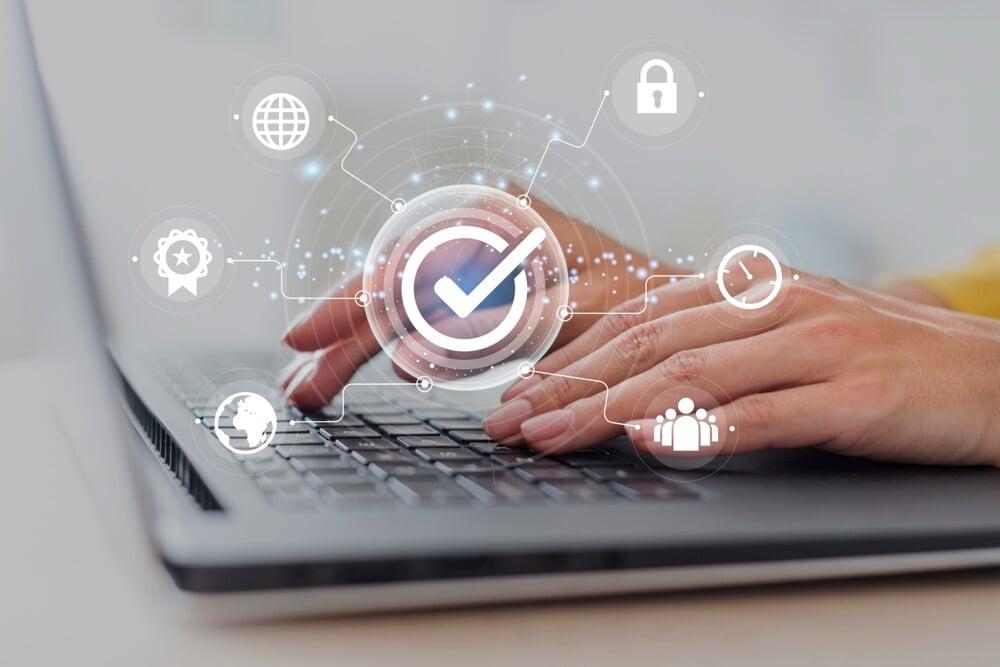Top Cybersecurity Trends

Over the past decades, the business world has undergone the digitalization process and is still going through it. Companies and organizations are increasingly relying on computerized systems to operate and manage their daily activities. For this reason, protecting networks, user access, Internet of Things (IoT) devices, and cloud devices is one of the ultimate topics to become knowledgeable about. These all come down to the term cybersecurity.
Here are some of the leading cybersecurity trends worth paying attention to.
Zero trust
The zero-trust model is an approach to IT systems implementation that works on the principle "never trust, always verify". It requires mandatory verification regardless of the source and target of the request. Any default access is eliminated. Instead, each request is fully authenticated, authorized, and encrypted before access is granted. In other words, users need to confirm the authenticity of their data with each request for access to all resources both inside the company's network perimeter and outside it. To minimize the threat of lateral movement, microsegmentation and least-privilege access approach are applied in this model.
Security-as-a-Service (SECaaS)
Security-as-a-Service is a cloud-based computing model that delivers services in the area of cybersecurity. These services are provided by an external organization and paid for on a subscription basis. It gives companies the possibility to limit their number of in-house security personnel, focus on core business competencies, and reduce maintenance costs. SECaaS includes network security, vulnerability scanning, continuous monitoring, security assessment, data loss prevention, intrusion protection, and some other precautions.
Awareness and user training
The human factor has always been, is, and will be one of the main causes of data leaks. According to Infosec report, nearly 97% of people worldwide may fail to recognize a phishing email. Because of this, many organizations try to take measures to prevent cyberattacks. 80% of data breaches can easily be averted by practicing cyber hygiene (Cyber Observer, 2020). So, besides implementing firewalls and sophisticated IT protocols, it is essential to enhance employees' awareness of cybersecurity issues. This can be done by creating, teaching, and training the models to transfer sensitive corporate data safely.
Machine learning
The scope of ML in cybersecurity is vast, from detecting anomalies and suspicious or unusual behavior to detecting zero-day vulnerabilities and patching known ones. Machine learning implies developing and manipulating specific patterns by using some algorithms to respond to active attacks in real-time. These patterns are based on rich and sophisticated data from everywhere (network, cloud, etc.) to forecast as many probable scenarios as possible and prevent potential threats.
Cloud Security
More and more companies are now shifting their workload to the cloud. Cloud infrastructure is a variety of services for data storage, computing, data transmission, etc., and cloud security, in a broad sense, is a set of technologies and tools aimed at protecting those services on the Internet. Cloud security misconfiguration can result in unauthorized access to cloud databases and data leakage. To detect and avoid poor configuration, the Cloud Security Posture Management (CSPM) is now increasingly being adopted.
GDPR Compliance
GDPR (General Data Protection Regulation) defines certain obligations and requirements organizations must comply with regarding how personal data can be used. It also includes eight data subject rights that ensure particular entitlements for individual's personal data. GDPR is effective across the European Union, yet companies that provide some goods or services to the European market also fall within its scope regardless of their location.
Mesh architecture
CSMA (Cybersecurity Mesh Architecture) is, in fact, a set of guidelines by which security tools should work well together and create a relatively holistic security system. This term was introduced by Gartner, which defines CSMA as "a composable and scalable approach to extending security controls, even to widely distributed assets." This model focuses on hybrid and multi-cloud environments to which wide varieties of devices and applications have access. CSMA envisages implementing highly interoperable security tools across four supportive layers that facilitate interaction between them.
The rapidly shifting cyber world requires companies and organizations to watch out for the latest cybersecurity trends like those mentioned above. So, keeping pace with changes in the current digital realities may help to eliminate vulnerabilities and mitigate risks of cyberattacks at present, as well as make some predictions for the future.